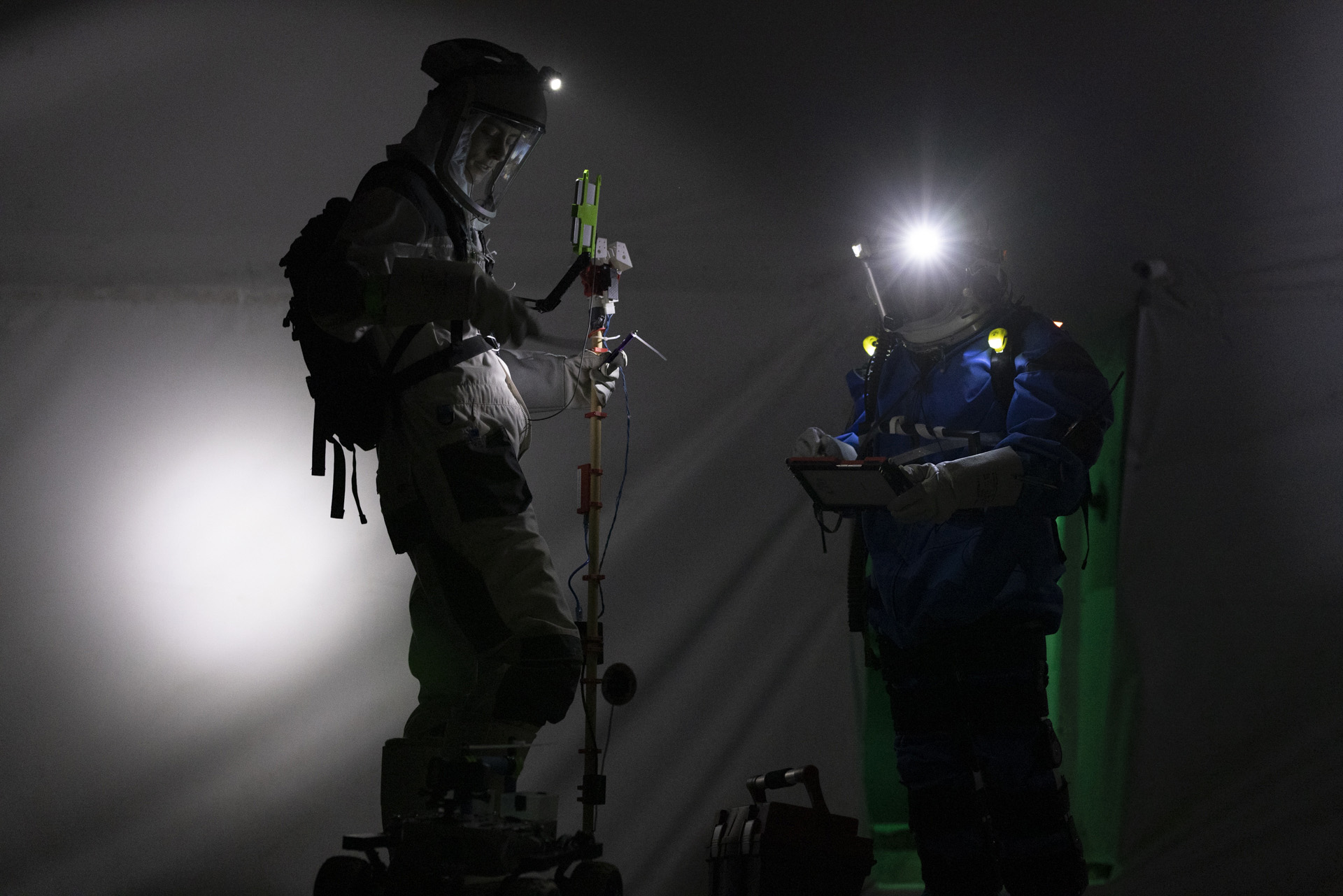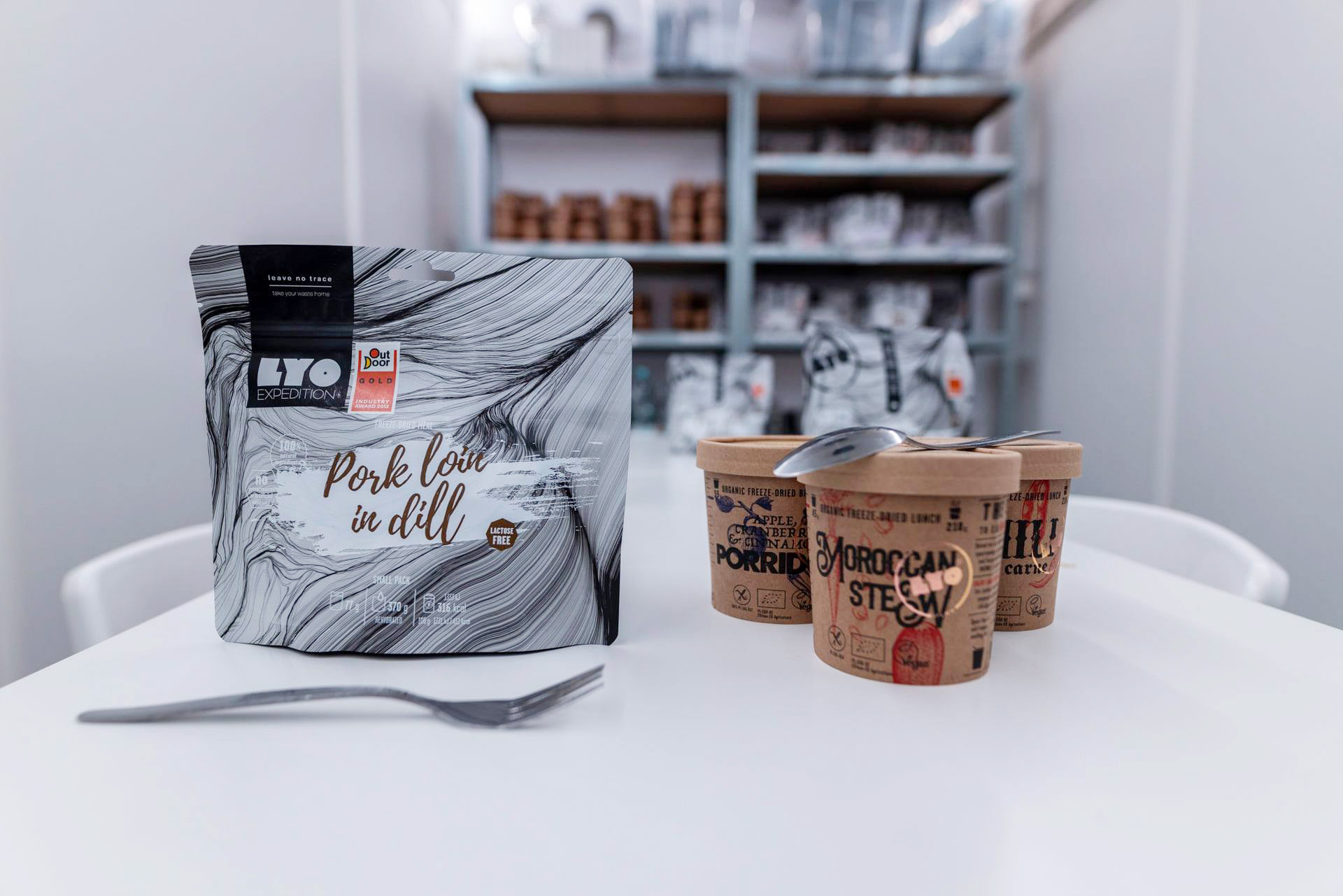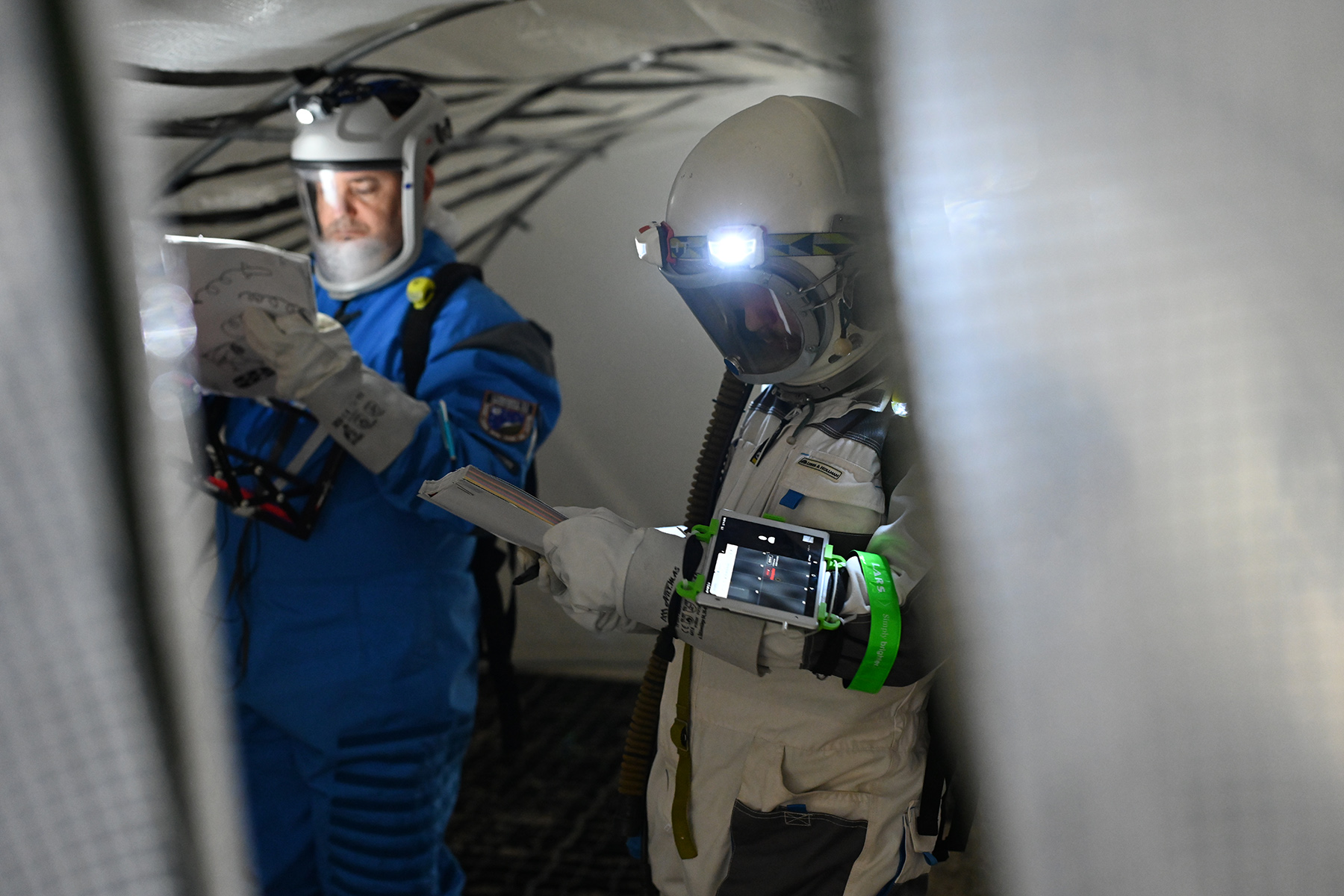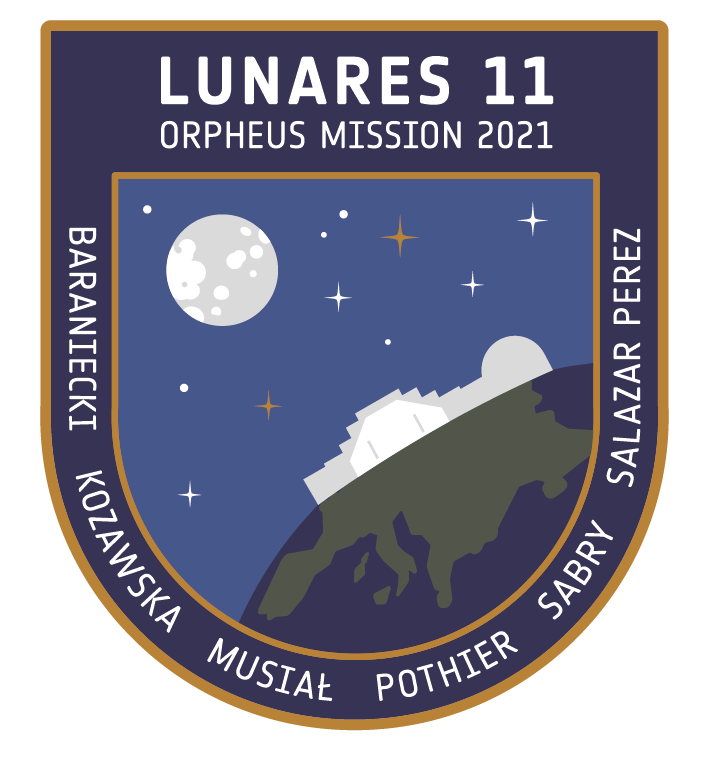For two weeks, from 14th to 27th of February I had a chance to take part in one of the most interesting scientific projects that are conducted on our planet - which was the Analog Astronaut mission Orpheus 11 in the LunAres Research Center. As I got a lot of questions about the various aspects of this fourteen-days old-nuclear bunker isolation, I decided to create this post with some answers inside :) Hope you enjoy it!
First of all - what is the Analog Astronaut mission anyway?
With the growing interest in human spaceflight, more and more studies are proposed in order to test all aspects of the space mission before the actual launch. This includes the psychological side and impact of the isolation on people, as well as procedures, performance, prototypes of tools and accessories, etc. It is essential to recognize and solve all the potential problems before the real missions. That is why the Analog Astronaut crewed missions are taking place here on Earth - basically to test us under extreme conditions, including being closed in the small spaces with the limited resources.
LunAres, hidden in Piła in a post-nuclear bunker…
The LunAres Research Center calls itself the only facility of this kind in Europe - and it’s right. Although there are some habitats on our continent, the polish one is unique in terms of simulated EVA - with its indoor EVA area that is almost 250 square meters in size! And it really does its job. I was sincerely impressed by the levels of immersion that can be achieved during our “moon-walks”.

Map of the Lunares habitat (source: lunares.space)

Orpheus 11 team, from left: Alicja Musiał, Marcin Baraniecki, Eduardo Salazar Perez, Benjamin Pothier, Aleksandra Kozawska, Sara Sabry
Orpheus 11 - mission crew
Our international team included Aleksandra Kozawska, service designer, who used to work at the European Astronaut Centre, biomedical engineer Sara Sabry, acting as the mission Medical Officer, Marcin Baraniecki, an amazing photographer and software engineer, satellite engineer Eduardo Salazar Perez, our commander and widely known explorer Benjamin Pothier and finally...me :). It was an invaluable opportunity for all of us to share our knowledge and experiences. The team would not be full without the Mission Control - Leszek Orzechowski and Agata Mintus, who were directing us from their cozy places on planet Earth. And why Orpheus 11? It’s easy! Not only were we the eleventh mission in the LunAres habitat, which is the same number that the one of the Apollo lander, which became the first on the Moon, but also Orpheus in mythology is… Apollo’s son. It all makes sense now, doesn’t it?
What do you actually do during the mission?
Coming back to the daily habitat life - our daily routine revolved around an agreed schedule we were obliged to follow. Every workday started around 7 am and just after the simulated sunrise woke us up, a morning yoga session was carried by Sara (and it was definitely the best part of the day!). After half an hour of workout, we used to prepare our freeze-dried breakfast (with three different porridges to choose from) and after some small talk - diverged to our daily activities (often starting with a briefing with Ground Control). There were a lot of habitat tasks that had to be concluded every day - getting readings from greywater usage sensors, taking care of our plants, cleaning… Not to mention the research for the medical and psychological experiments we were part of - filling psychological questionnaires and daily med-checks quickly became our habit.
Every two days a simulated EVA was performed. This activity requires a huge effort from the whole crew, who need to cooperate efficiently to prepare everything according to the schedule. A lot of checklists and procedures need to be followed to successfully organize the Moon activity - complete the astronaut suits (including parts of old jet pilot suits adapted for that purpose), dress up, prepare the HabCom and LEO Rover… these are only a small part of all the preparation.

Simulated EVA - HabCom

Simulated EVA - Analog Astronauts on the Moon
Besides the morning yoga (which was our voluntary idea) all team members were obliged to exercise daily - a one-hour workout was required to keep our health and muscle mass. The treadmill was available, but I also managed to dance a bit of zumba (what was kind of the achievement in the small habitat place :)).
The great part of the mission are of course scientific experiments and personal projects. Each of us had some part of the schedule adjusted to perform all planned activities. Personally, I was responsible for prototyping new tools for the EVA and taking care of plants in the Biolab - together with Ola we managed to grow some lettuce and spinach on the hydroponics and aeroponics stands using the grey water taken from the tanks (gathered from the hygiene module). Learning more about biology and chemistry was something new and really inspiring for me - I’m even thinking of creating my own small aeroponics stand in my house now.
Main challenges - food, light & water
In the previous paragraph, I mentioned briefly our morning porridges - it’s worth highlighting that all the food that we consumed during the mission was freeze-dried. We ate meals produced by the Lyofood company and I have to admit that they were surprisingly good! Obviously, after the first week we all craved a basic slice of bread or a bit of a fresh vegetable - but to be honest living only on the freeze-dried diet is not that bad in the end. Our definitely favourite meals were Penne Bolognese and Bigos - I even feel like I miss them a little bit.
And what about light? If I can be honest, before the mission I believed that lack of natural light would be the worst thing during this adventure - as I was surprised to discover that I was totally wrong! Lights in LunAres are, in fact, artificial, but the cycle of the day and night is thoroughly simulated - our simulated “day” was starting around 7 am, when the lights were turning themselves on (changing both luminosity and colour) and ending at 10 pm (with the subtle sunset from 7 pm). It was quite convincing and I didn’t miss the natural sunlight at all during the mission. Maybe it was also connected to the fact that Orpheus 11 had started in the middle of the coldest February ever - the temperature was reaching -15°C outside when we went in and it was snowing awfully all the time. It was a really positive shock when the mission was finished and we left the habitat just to see… sun and extremely beautiful first days of spring outside. Best experience ever!

Freeze-dried food - yummy!

Plants in Lunares - hydroponics stand
One of the interesting features of the LunAres habitat is a unique greywater collection system. Shower and sinks are all connected to the tanks and all of the water that is used in the hygiene module “comes back” as the fluid to flush the toilet with. Part of the real manned missions is always a limitation in access to the basic resources (which are not so basic in space), so we were obliged to use as little water as possible. Forget about the long showers! No more rethinking your life choices with the streams of hot water gently touching your body :). One quick shower after the one-hour training is all you have! And remember to turn off the heaters when you take it - electricity is one more thing limited in the habitat…
If you summarize all of these constraints, it may seem that the life on the simulated analog astronaut’s mission is really hard. But in fact - the perspective that you take part in research that will be important for the space sector growth and that it is all for science makes the experience extraordinary. You stop to consider these difficulties as obstacles - and start to perceive them as something absolutely normal - it just works like that and that’s all!
EVA & astronaut tools prototyping
One thing that I loved the most in LunAres was simulated EVAs (extravehicular activities). As was mentioned earlier - we had a big area in the hangar itself to simulate the unfriendly Moon environment, where the missions could have been performed. Between our habitat and the terrain an airlock was placed - before and after every EVA there was a 5-minute depressurization time needed. Every EVA had its scenario, which we planned carefully with the Ground Control team, to be able to test our tools’ prototypes, emergency procedures, and the rover. When you think about astronauts jumping on the Moon surface (or even falling) the fact that strikes is how limited their movements are. Big and uncomfortable suits, inability to bend or squat… That could be a real problem if anyone falls, drops their tool or simply wants to take a soil sample. That is why one of the main goals of our mission was to prototype and test accessories that could be usable in such conditions - and by simulating real astronaut’s inconvenience (using e.g. parts of exoskeletons) it was possible for us to try them during the EVA. There are not many resources about designing this kind of tool, but I manage to find one from Apollo and one about the planned Artemis mission, so we based our research mostly on these two papers. We managed to fix a gripper created by one of the previous teams, design our own scoop (based on Apollo’s designs) and start the development of a new pair of tongs for bigger rock samples. I also worked on a project especially for the simulated EVA - tablet chest holder for the analog astronaut, while Eduardo designed a simple but much-needed handle for the Leo rover.

Simulated EVA - Analog Astronauts in the Shelter

Simulated EVA - dressing up
What have I learned and what can you learn on the Analog Astronaut mission?
I get to know the answer to the questions I had in my mind from the moment I made the decision about taking part in the mission - how I, as a person, will really feel and behave in such circumstances? How much the expected limits will disturb me? Will I manage to go along with the experiments, tests and work successfully with the rest of the team? Happily, the discovery was - every aspect was good! To be honest, the most difficult part of the mission for me was… coming back to normal life after it. Two last days in LunAres were quite hard - the vision of returning to the everyday stuff after two weeks of isolation with no news and strictly limited contact with the world was remarkably hard to imagine. It wasn’t that bad after all and the whole team managed to do that without major issues, but still - the mission itself was absolutely amazing!

Orpheus 11 Mission, Lunares - patch
On this kind of mission, you can learn not only technical things but also simply... the value of teamwork. It’s such a cliché, but still - it's so true! With Orpheus 11 crewmates we were laughing that we are all the group of highly-socialized introverts. Every one of us had our goals and projects, but we also managed to work successfully as a group in different situations.
It’s also worth mentioning here that it’s good to have your own ideas to work on during the mission - the schedule is indeed focused on the habitat tasks, but there is some time for individual research and experiments, so it’s good to use it on something interesting. As an example - together with Eduardo we managed to spontaneously build an antenna for UHF radio communication, connect it to the SatNOGS network and... listen to some satellite transmissions. I’m still so happy about this project and impressed by our results - despite being under the metal-based construction in the roof, a signal was sometimes very strong. But, enough about antennas…
...and to summarize all of the Analog Astronaut experience - it’s something so unique and special that it was hard for me to believe that it’s already the end. I perceive LunAres almost as a second home now! We did so many extraordinary experiments and research that it’s hard to believe that it was only two weeks. If you dream about space or would like to test yourselves in such conditions - just go for it! It’s worth it all.